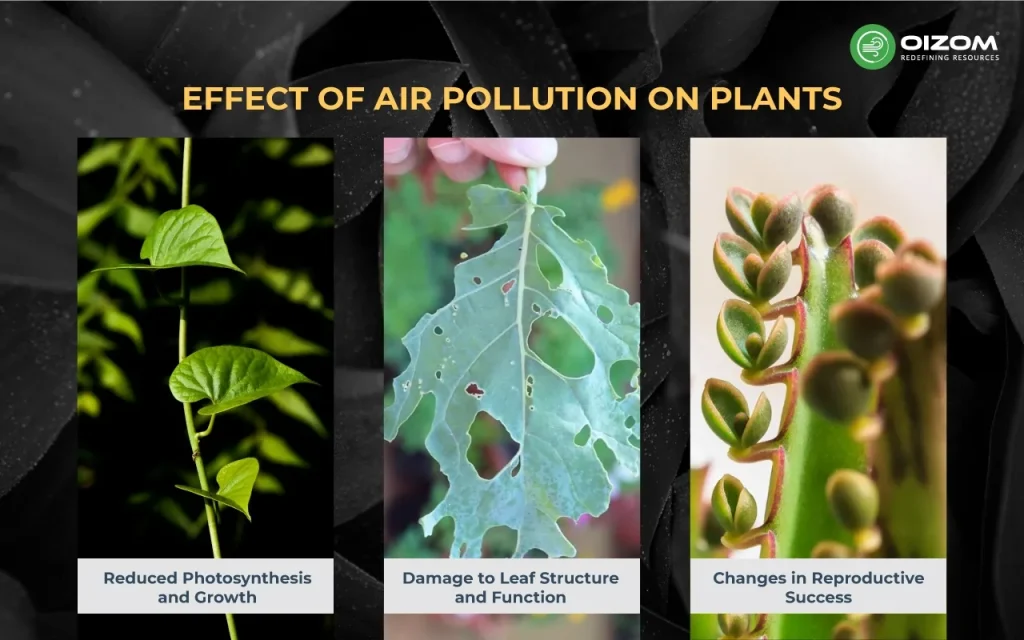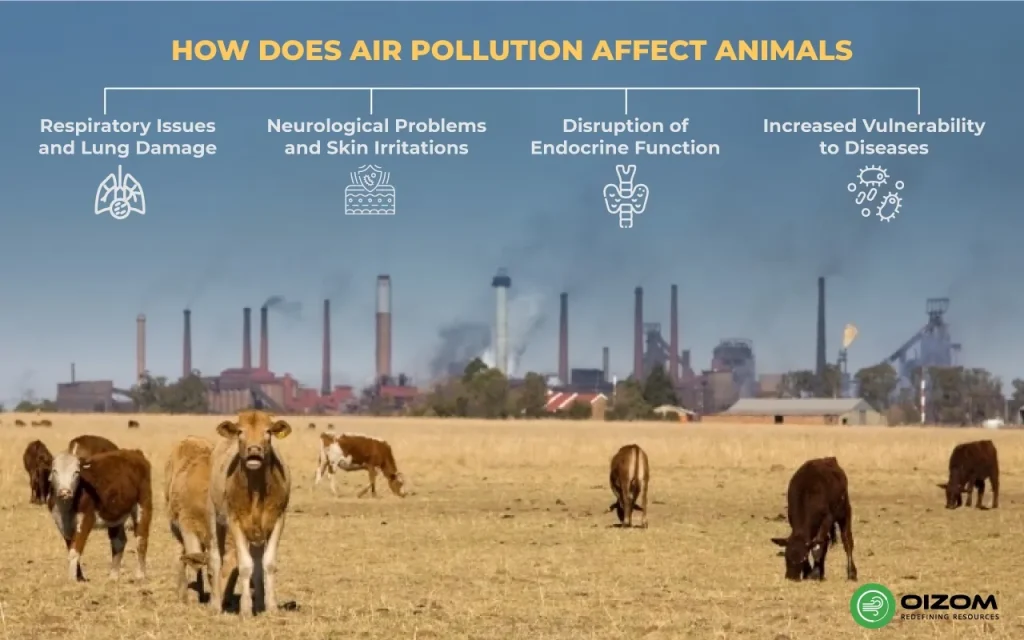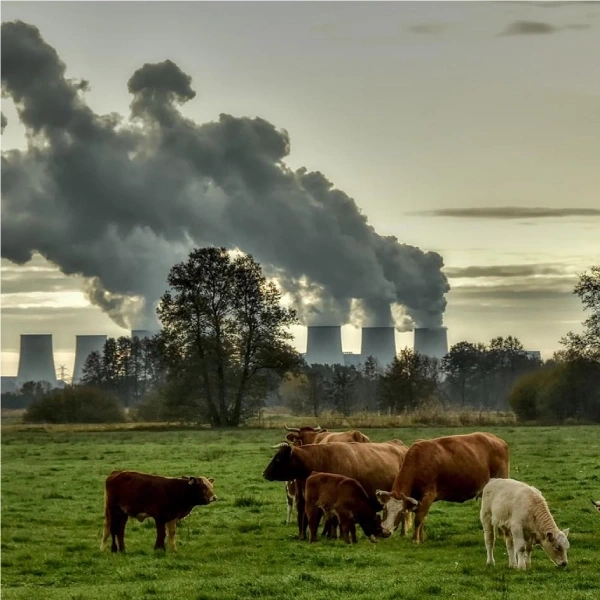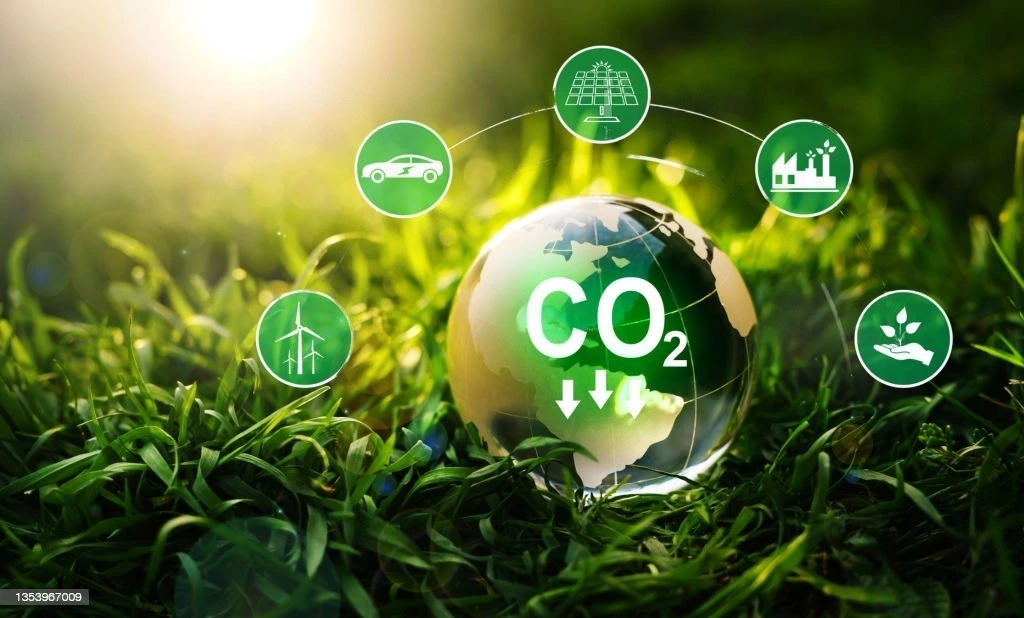Air pollution, emerging as a formidable adversary to global ecosystems, is primarily born from the unbridled activities of industrialization, urban sprawl, and transport congestion. The effect of air pollution on plants and animals is profound, as these core pillars of our ecological fabric, grapple with the multidimensional repercussions of deteriorating air quality. A profound understanding of these ramifications is imperative, offering pathways for mitigation and conservation.
Effects of Air Pollution on Plants

1) Reduced Photosynthesis and Growth
Photosynthesis, the very cornerstone of plant life, ensures growth and nourishment. This process is imperilled by particulate matter, ozone, sulphur dioxide, and nitrogen oxides. These agents often hamper the chlorophyll’s absorption capability, derailing the natural process of converting light to chemical energy.
Furthermore, studies have illuminated that a 10% reduction in photosynthesis can lead to a consequential 5-8% decline in crop yield. For instance, nutrient-rich crops like soybeans have significantly reduced yield, even in mildly polluted environments.
2) Damage to Leaf Structure and Function
Air pollutants’ insidious nature means they can settle onto the leaf surfaces, initiating a sequence of deleterious effects. The visible symptoms are manifold, from necrotic spots and premature leaf drop to yellowing and stippling. These damages disrupt essential functions like transpiration, making plants vulnerable to heat stress, nutrient deficiencies, and subsequent illnesses.
3) Changes in Reproductive Success
From the larger perspective of an ecosystem’s vitality, air pollution’s effect on plant reproduction is severely unsettling. Pollutants can distort the structural integrity of pollens, debilitating their function. With compromised pollen health, plants face daunting challenges in reproduction. A cascading effect ensues, with herbivores facing food shortages, further affecting the predators that depend on them.
Examples of plant species affected in the US
In the US, certain plant species, like the Black Cherry, have displayed extensive foliar injury in areas with dense ozone concentrations. Another species, the Eastern White Pine, bears witness to the devastating effects of sulphur dioxide, with its needles showing evident signs of discolouration and damage.
Effects of Air Pollution on Animals

1) Respiratory Issues and Lung Damage
Drawing parallels to humans, animals too are victim to the respiratory onslaught posed by air pollutants. Chronic exposure can evoke myriad ailments, from bronchitis and asthma to irreversible lung damage. This has been observed across species, from pigeons in metropolitan areas to deer in more semi-urban locales.
2) Neurological Problems and Skin Irritations
As the realm of research broadens, evidence suggesting the neurotoxicity of certain air pollutants in animals is mounting. Urban birds, for example, have manifested alterations in their songs, which could impede mating rituals. On the dermatological front, particulate matter can trigger skin irritations, reducing the creature’s overall fitness.
3) Disruption of Endocrine Function
Endocrine-disrupting chemicals (EDCs) in polluted air pose another grave threat. Animals exposed to these agents can experience hormonal imbalances, impacting reproduction, development, and survival. Notably, amphibians have displayed alarming vulnerabilities, with observed skewed sex ratios and limb deformities.
4) Increased Vulnerability to Diseases
The weakening of animal immune systems due to pollutants increases susceptibility to various diseases. A quintessential example lies in the amphibian populations of the US. With compromised immunity, these animals have succumbed to fungal diseases at an unprecedented rate, leading to sharp population declines.
Examples of wildlife affected in the US
The US paints a grim portrait of wildlife affected by air pollution. Birds like sparrows and kestrels inhabiting urban territories have exhibited diminished hatch rates. Aquatic ecosystems haven’t been spared either. Fish populations in areas like Chesapeake Bay grapple with the after-effects of nitrogen oxide emissions, leading to algal blooms and the subsequent depletion of oxygen, endangering marine life.
Air pollution's multifaceted damage to ecosystems
| Ecosystem Component | Pollutant Impact | Examples of Affected Species | Consequences |
|---|---|---|---|
| Plants: | Reduced photosynthesis and growth (5-8% yield decline for crops) | Soybeans, Black Cherry (ozone) | Food shortages, ecosystem imbalance |
| Leaf damage (necrosis, yellowing) | Eastern White Pine (sulfur dioxide) | Reduced transpiration, vulnerability to stress | |
| Altered pollen structure | Various plant species | Reproduction difficulties, cascading ecosystem effects | |
| Animals: | Respiratory issues and lung damage (bronchitis, asthma) | Pigeons, deer | Reduced fitness, mortality |
| Neurological problems, skin irritations | Urban birds, various species | Behavioral changes, immune system suppression | |
| Endocrine disruption and hormonal imbalances | Amphibians (skewed sex ratios, deformities) | Reproductive issues, developmental problems | |
| Increased vulnerability to diseases | Amphibians (fungal diseases), Chesapeake Bay fish | Population decline, ecosystem disruption |
Air Quality Regulations and Initiatives in the United States
The battle against air pollution in the US has seen the fortification of regulations, with the Clean Air Act being a prime example. The confluence of technology and stringent policy-making offers hope. In this nexus, real-time air quality monitoring emerges as the frontline defence, equipping authorities and communities with real-time insights and data for actionable interventions.
Enter Oizom
Oizom, at the cusp of environmental technology, offers unparalleled air quality monitors powered by AI and IoT. Their devices provide real-time, accurate readings and encompass a range from industrial terrains to public recreational spaces, ensuring holistic coverage. With rising concerns over Outdoor Air Pollution, these advanced monitoring solutions play a crucial role in ensuring cleaner and healthier environments.
Join the vanguard against air pollution with Oizom’s cutting-edge air pollution monitoring system and solutions.
Conclusion
The labyrinth of challenges posed by air pollution requires a multifaceted approach. While the journey is arduous, the amalgamation of community engagement, robust policies, and technological spearheads like Oizom can chart a roadmap toward cleaner air and a restored environment. To contribute to this mission, explore What are ways to reduce air pollution? and discover effective strategies for a healthier planet.
For a future where every breath counts, delve into Oizom’s air quality innovations today Learn More.
FAQs
Air pollution disrupts photosynthesis by blocking sunlight with pollutants like smog and depositing harmful particles on leaves. This reduces the plant’s ability to produce food, weakens growth, and lowers crop yield.
Ozone (O₃), sulfur dioxide (SO₂), nitrogen oxides (NOₓ), and particulate matter are the most harmful. These pollutants damage leaf tissues, hinder nutrient absorption, and make plants more vulnerable to diseases.
Air pollution weakens trees by damaging foliage and altering soil chemistry through acid rain. Over time, this stresses forest ecosystems, reduces biodiversity, and disrupts natural habitats.
Animals suffer from respiratory issues, reduced immunity, and reproductive problems due to air pollution. Pollutants can also contaminate food sources and habitats, leading to long-term health risks and population decline.
Measures include stricter air quality regulations, adoption of clean energy, expanding green cover, and monitoring air pollution levels. Protecting natural habitats and restoring ecosystems also help reduce the impact.






